This recipe is morphed from Mama’s Biryani recipe. Sometimes, I would serve Vegetarian Biryani instead of Biryani with meat or chicken. This saved me the hassle of fixing two types of pilafs for a lunch or dinner party. I would pair it with channa dal, two different styles of sabzis (Indian sauteed vegetables), a paneer curry, and a non-vegetarian dish. Along with that came the usual array of pickles, raita, and rotis. It made quite a meal!
There is a less elaborate Vegetarian Pilaf, which I shall share as well.
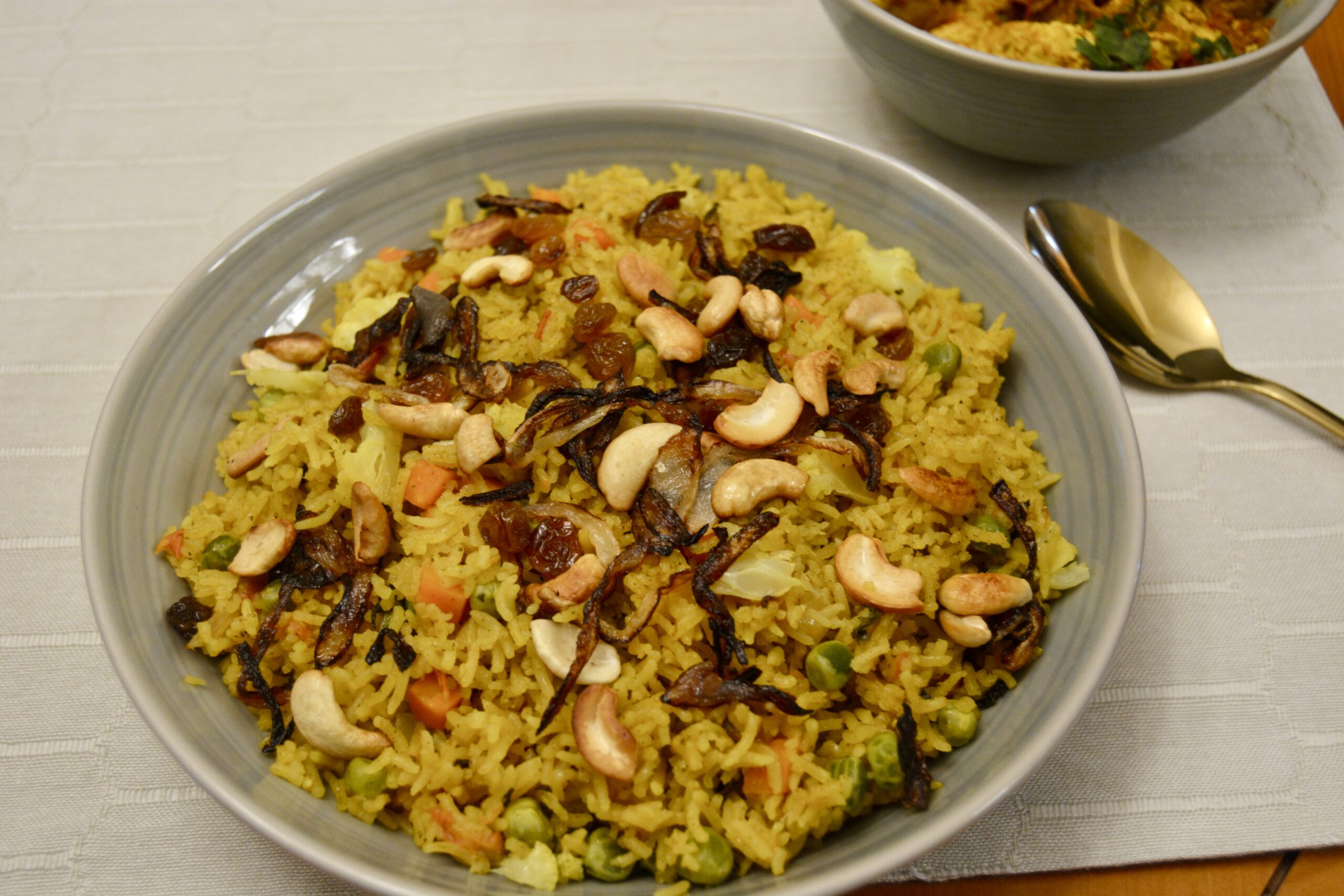
Vegetable Biriyani
Ingredients
- 5 cups Basmati rice
- ½ cup oil (plus a little extra, if needed)
- 2 Bay leaves
- 4 cinnamon sticks (or ½ tsp cinnamon powder)
- 1 large black cardamom
- 6 small green cardamoms
- 6 cloves (or ¼ teaspoon clove powder)
- 3 large onions (peeled, cut in half, and sliced thin)
- 2 medium Serrano chilies (washed, remove stem, and slice in half)
- 3 tbsp ginger paste (freshly ground is best, but ready-made is fine, too)
- 2 tbsp garlic paste (freshly ground is best, but ready-made is fine, too)
- ½ cup fresh green coriander ground fine (mainly leaves, but a portion of stem is okay)
- 3 tbsp coriander powder
- 1 tsp turmeric powder
- 1 tsp red chili powder (or to your taste—remember this and the green chilies will add heat to the pilaf)
- 6 medium tomatoes (finely chopped or puréed)
- 1 tbsp poppy seeds ground smooth (optional)
- 1 can coconut milk (or the fleshy, white part of 1 fresh coconut ground smooth with the poppy seed)
- 8 cups water (plus a little extra)
- 2 cups peas and diced carrots (you may combine it with other vegetables such as cauliflower, cut into flowerets, or diced beans)
- 2 tbsp mint leaves (finely chopped)
- 2 tbsp chopped fresh green coriander leaves
- Salt (to taste)
- 2 limes (juice only)
Garnish
- ½ onion (or use pre-fried store-bought onions to make it easy)
- sautéed cashews (or use cocktail cashews)
- sautéed raisins
Instructions
To Prepare
- Gather all the ingredients before you start.
- Wash and soak the 5 cups of rice for 15-20 minutes. Drain and set aside.
- Mix coconut milk, ground poppy seed(optional), and 8 cups water.
- Together they should measure 10 cups plus 2 tablespoons of liquid.
- Combine chopped mint leaves and coriander leaves with the juice of 2 limes in a small bowl.
To Cook
- Heat ½ cup of oil in an 8-quart heavy-bottomed pot on medium heat. You may need a tablespoon or two extra as you start to sautée.
- Add the whole Bay leaf cinnamon, cardamom, and cloves.
- Add cut onions and slit green chilies.
- When half-fried (about 6 minutes), add the ground ginger, garlic, spice powders (including the ground cinnamon and cloves, in case you decided to use them instead of the whole ones), and green coriander paste.
- Fry for about 3-4 minutes until fragrant, then add the chopped and pureed tomatoes. Sauté for another 5 minutes.
- Now add the drained rice and sauté on medium heat, stirring carefully to not break up the rice grains. About 2-3 minutes.
- Pour in the water, coconut milk, and salt. Cover and bring to a boil.
- Once the water starts to boil (10-15 minutes), add the vegetables and cook on medium-low until the water is almost evaporated and you see little pits on top of the rice.
- Stir gently. Sprinkle the chopped mint, coriander, and lemon mix over the rice.
- Put on low and cook another 10 minutes until the pits disappear on top and the rice is cooked. You can test by testing a grain between your thumb and forefinger. If it's grainy, let it cook for a little more, but make sure the underside is not getting burnt.
- Fluff with a fork and plate on a rice platter or serving dish.
- Garnish with sauteéd onions, cashews, and raisins.
Notes

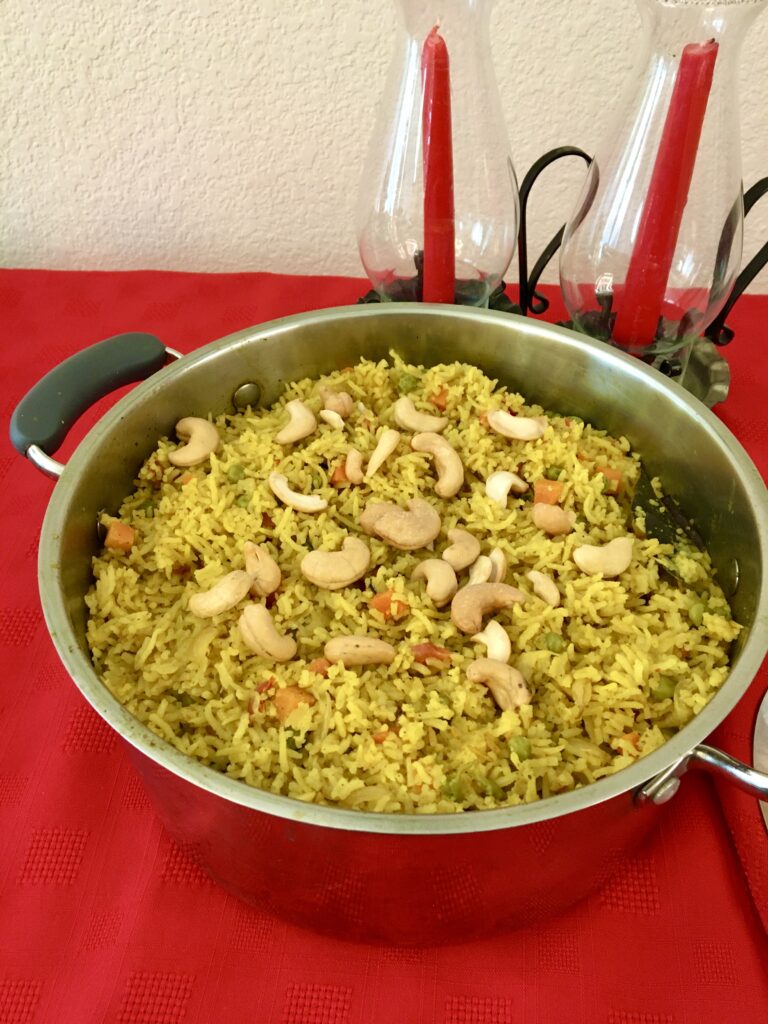
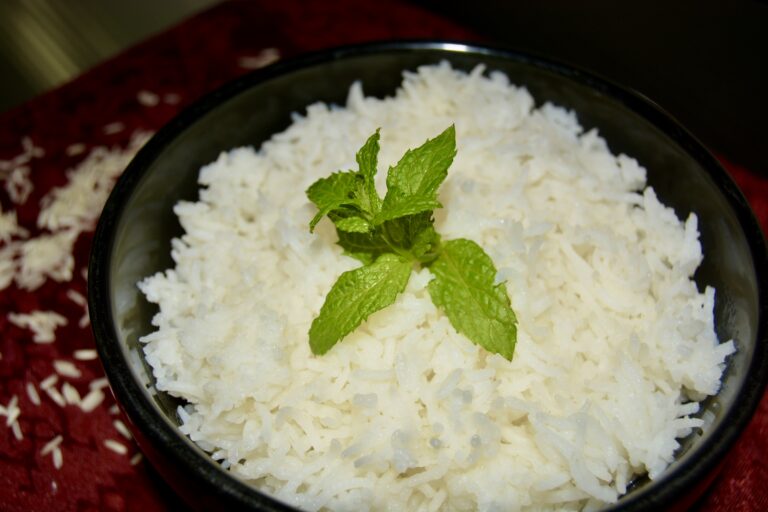
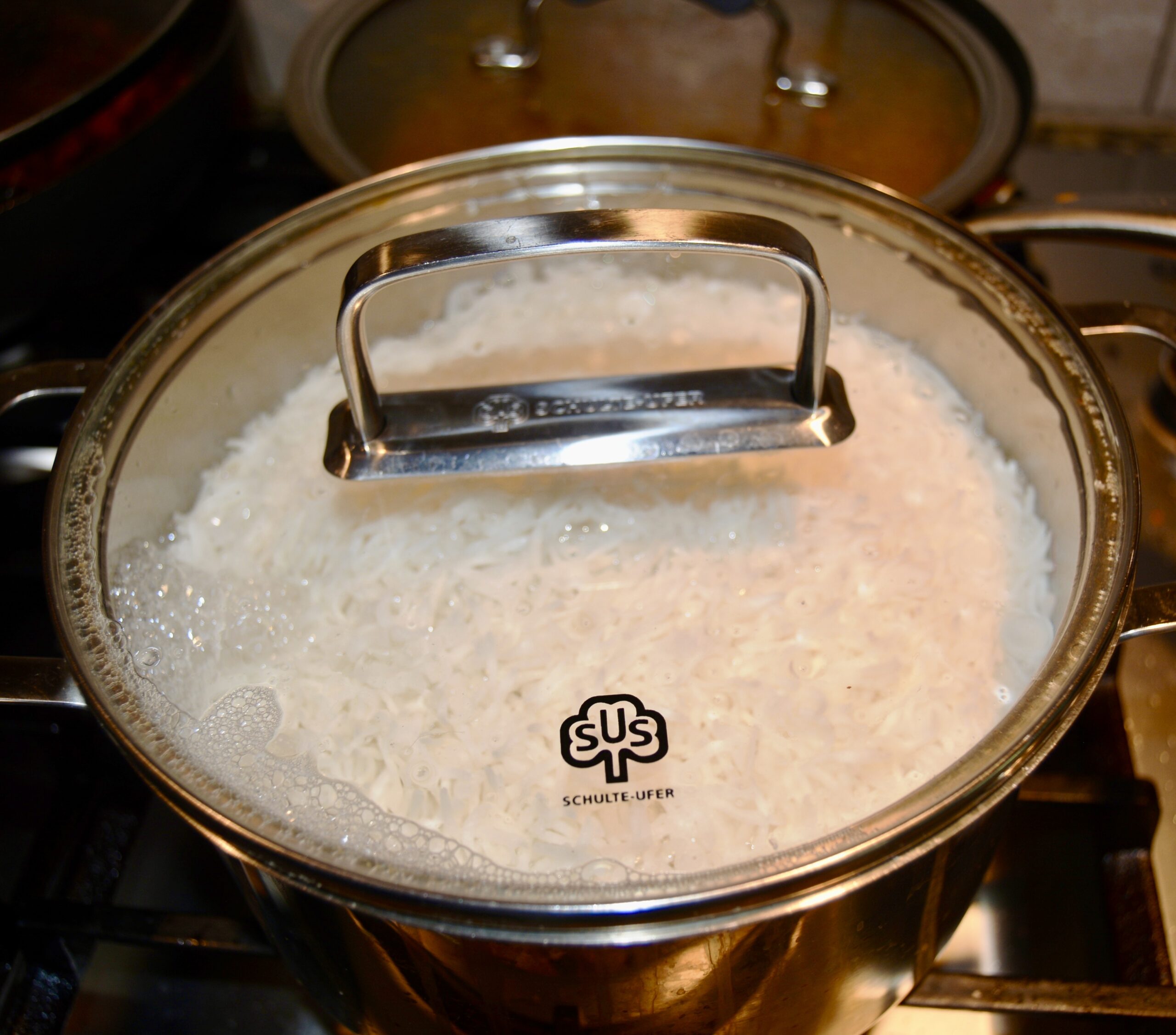
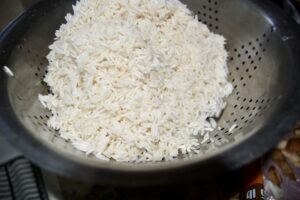 Another way to fix rice is to wash and rinse the rice as above. Then in a pot, add about 4 times the water as rice (1:4 ratio). Bring the rice to a boil on medium heat, then reduce the heat and let the rice cook for 15 minutes. Test the grain to see if it's almost done. Turn off the heat. Now strain the rice through a rice strainer or fine sieve. Be careful of the steam! When all the water is drained, give the sieve a shake and put the rice back into the pot Cover with a tight lid and let it sit for 15 minutes before you fluff it.
Another way to fix rice is to wash and rinse the rice as above. Then in a pot, add about 4 times the water as rice (1:4 ratio). Bring the rice to a boil on medium heat, then reduce the heat and let the rice cook for 15 minutes. Test the grain to see if it's almost done. Turn off the heat. Now strain the rice through a rice strainer or fine sieve. Be careful of the steam! When all the water is drained, give the sieve a shake and put the rice back into the pot Cover with a tight lid and let it sit for 15 minutes before you fluff it.